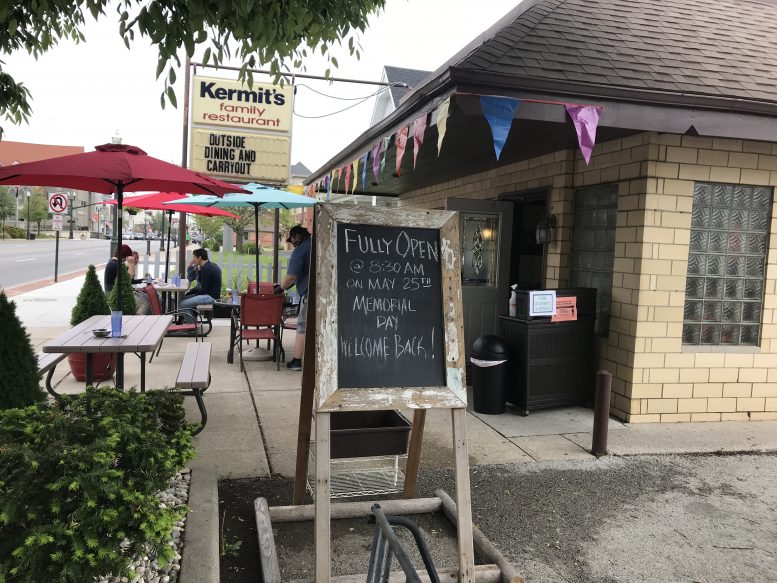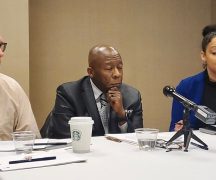At some point, Ohioans will want frequent access to coronavirus tests and get quick results. That way, they can safely see loved ones who have for months been locked away in nursing homes, for example.
But that point appears to be a long way off.
By the end of Memorial Day weekend, Ohio’s economy almost completely reopened, with some social-distancing measures still in effect. But state officials apparently still don’t seem to have a plan for broad, statewide testing.
From the early days of the coronavirus pandemic, detecting infections through widespread testing has been acknowledged as a key for controlling the spread of disease.
First cases of COVID-19 were detected in South Korea around the same time as those in the United States. Yet South Korea has had fewer than 300 deaths from the disease, while the United States is approaching 100,000.
Many experts attribute the difference to South Korea’s quick deployment of a widespread testing-and-tracing program that enabled officials to locate and isolate the virus.
In the United States, by contrast, the federal government fumbled putting together such a program. By mid-May, President Donald Trump seemed to have given up on one, suggesting that testing might be “overrated.” That was just days after his top health expert stressed its importance.
On the state level, Gov. Mike DeWine has also acknowledged the importance of testing, but as he began easing coronavirus restrictions in early May, questions lingered about both the state’s testing capacity and its strategy to deploy them.
Confusion among state officials appeared to persist last week.
The state said it would expand its capacity to be able to test 22,000 Ohioans a day by the end of May.
But Dr. Amy Acton, director of the Ohio Department of Health, cautioned that that was far from enough. Even with that capacity, state testing would still have to be tightly restricted, she said.
Even so, Lt. Gov. Jon Husted on Tuesday claimed Ohio had solved the testing problem, saying, “Adequate testing is not something we have had until recently, so that was not something we could deploy earlier on.”
Then on Thursday, the Capital Journal asked DeWine why, if the state had the capacity to test more than 18,000 a day at that point, it was actually testing fewer than 10,000.
His answer wasn’t clear.
“There’s not really an infrastructure out there to get the swabs out and everything out,” he said during a press conference. “This continues to be a work in progress. We’re going to continue to see those numbers go up. That’s my commitment to the people of Ohio. Every day we’re working on this. I have a team that is working on this to close that gap. That is not enough, though. We are also working on taking that capacity even higher than the 18,000 per day.”
Nor have state officials released detailed plans to deploy tests widely through the state once enough come available.
For example, DeWine Press Secretary Dan Tierney on Tuesday said that a system is in place for tests performed by private labs to be reported back to the state. He referred questions about the details of the plan to the department of health.
But a spokeswoman for the agency didn’t respond to questions about that or its broader strategy to broadly test in Ohio — if such a strategy exists.
Also, the Ohio Department of Medicaid has for more than a week not responded when asked if it would clear the way for pharmacists to be paid for conducting coronavirus tests on Medicaid clients.
“Pharmacists really want to step up to the plate,” said Antonio Ciaccia, a spokesman for the Ohio Pharmacists Association. “They don’t really have a mechanism to do that yet.”
***
Also from Ohio Capital Journal:
Trump war on Affordable Care Act front and center during COVID-19 pandemic
The coronavirus is a double whammy. Many are losing health coverage at the same time they’re threatened with a disease that often leads to hospital stays that can be ruinously expensive.
So, amid spiraling job losses, millions are expected to buy individual health plans on exchanges under the Affordable Care Act, also known as Obamacare. But will the coverage survive challenges posed by the Trump administration and state attorneys general?
As of May 2, an estimated 27 million Americans were newly uninsured due to a job loss, the Kaiser Family Foundation reported.
Of them, nearly 13 million were estimated to be eligible for Medicaid because they make 138% or less of federal poverty guidelines in states such as Ohio, which expanded eligibility under the ACA. Another 8 million are eligible for subsidies on the ACA exchanges because they’re making 400% or less of poverty guidelines, Kaiser reported.
The ACA, former President Barack Obama’s signature health law, has been under attack by his successor, President Donald Trump. On the day Trump was sworn into office, he ordered his administration to stop implementing parts of the law while Republicans in Congress prepared an attempt to repeal it. READ MORE
A doctor shares 7 steps he’ll review to decide when and where it’s safe to go out and about
As we return to some degree of normalcy after weeks of social distancing, we all need a plan. As an immunologist, I’ve given this a lot of thought personally and professionally.
When I venture out, I am first going to check the number of new COVID-19 infections in my community. In Virginia, for example, as of May 16, some health districts had 200 new daily cases and others fewer than 10. I am going to be less risk-averse when new cases fall to near zero. READ MORE





